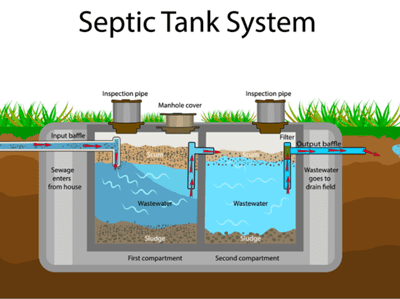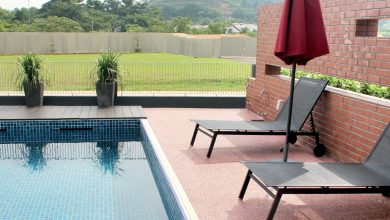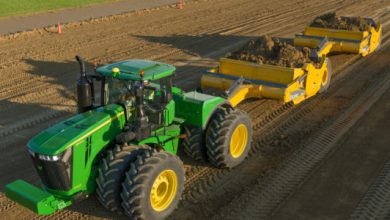Factors That Affect Septic System Cost: A Homeowner’s Guide

When planning to install or replace a septic system, homeowners often focus on the immediate price of the system itself. However, several factors influence the overall septic system cost, many of which may not be apparent at first glance. From the type of system to the complexity of the installation process, it’s essential to understand the different elements that contribute to both the upfront and long-term expenses. This guide will provide an in-depth look at these factors, helping you plan for your septic system investment.
What Is a Septic System and Why Does Its Cost Vary?
A septic system is a self-contained wastewater treatment system that disposes of sewage from your home. Unlike city sewage systems, a septic system requires installation, maintenance, and replacement over time, all of which come at a cost. The main components include a septic tank and a drain field, which work together to treat and filter wastewater. While the basic design may sound simple, several factors can influence the overall septic system cost.
The variability in cost stems from several factors, including property-specific conditions and system complexity. Understanding these variables will not only help you budget effectively but also ensure the longevity and performance of your system.
Key Factors Influencing Septic System Cost1. Type of Septic System
There are different types of septic systems, and the one you choose will significantly impact your total septic system cost. Each type varies in complexity, efficiency, and installation difficulty.
- Conventional Gravity Systems: This is the simplest and most affordable type. Wastewater flows from the house into the septic tank, where solids settle, and liquids move through to the drain field by gravity. Because of its simplicity, it has a lower septic tank cost compared to more complex systems.
- Chamber Systems: These systems use chambers instead of pipes to distribute wastewater. While more expensive than conventional systems, they work well in areas with poor soil conditions.
- Aerobic Treatment Systems: These advanced systems use oxygen to break down waste more quickly. Aerobic systems are more expensive to install and maintain, but they’re ideal for homes with limited space for drain fields or areas with environmental concerns.
- Mound Systems: In areas with shallow soil or high water tables, a mound system is required. The additional cost of building the raised mound to ensure proper drainage can increase the total septic system cost.
2. Soil Conditions and Percolation Tests
The condition of your soil plays a critical role in determining the septic system cost. Before installation, a percolation test (or “perc test”) is conducted to evaluate the soil’s ability to drain water.
- Good Drainage: If your property has sandy or loamy soil with good drainage, you can expect a more straightforward installation and lower costs.
- Poor Drainage: Clay, rocky soil, or areas with a high water table will require more complex systems, such as mound or aerobic treatment units, which are more expensive. Additional excavation or engineered solutions for proper drainage can also drive up the septic tank cost.
If the soil conditions on your property are not ideal for a conventional system, you may also need to install a larger drain field, which will increase the overall cost.
3. Size of the System
The size of the septic system required is determined by the size of your home and the number of occupants. Larger homes with more bedrooms and bathrooms will produce more wastewater, requiring a bigger tank and larger drain field.
- Septic Tank Capacity: The size of the septic tank you need is based on the volume of wastewater your household generates. A larger septic tank will cost more due to the increased materials and labor required for installation.
- Drain Field Size: A bigger drain field is necessary for larger systems, which means more excavation and more materials, all contributing to a higher overall septic system cost.
4. Location and Accessibility
The accessibility of your property can significantly affect installation costs. If your home is in a remote or difficult-to-reach area, labor and transportation costs will likely increase.
- Difficult Terrain: Homes on hilly or rocky terrain often require more extensive excavation, adding to the labor costs. If heavy machinery is needed to prepare the site, expect the septic tank cost to rise.
- Remote Locations: If your property is far from suppliers or requires special equipment to transport materials, this can further increase the overall cost.
5. Permit and Inspection Fees
Installing a septic system requires local permits and often multiple inspections before, during, and after installation. These fees vary depending on your local regulations and the complexity of the system you are installing.
- Permit Costs: Permit fees are necessary to ensure your septic system meets health and environmental standards. These fees can range anywhere from a few hundred to over a thousand dollars, depending on your region.
- Inspection Fees: Some areas require periodic inspections throughout the installation process to ensure everything is being done according to code. These inspections, while essential for ensuring the quality and safety of the system, can add to the overall septic system cost.
6. Labor Costs and Professional Expertise
The cost of labor will vary depending on where you live and the expertise of the contractors you hire. It’s essential to work with licensed professionals who have experience installing septic systems, even if it means paying a bit more upfront.
- Licensed Contractors: Hiring a reputable contractor with the right licenses and insurance is crucial for the long-term success of your septic system. While this may increase your initial costs, it can save you from expensive repairs down the road.
- Labor Rates: In areas with higher costs of living, labor rates will be higher, and this will affect the overall septic tank cost.
7. Septic Tank Material
The material of the septic tank itself is another critical factor in the total septic system cost. There are several types of septic tanks, each with its pros and cons.
- Concrete Septic Tanks: These are the most durable and commonly used. They are more expensive to install due to their weight, but they have a long lifespan and are less prone to damage.
- Plastic Septic Tanks: These are lighter and easier to install, making them less expensive upfront. However, they are more prone to damage and may not last as long as concrete tanks, potentially leading to higher long-term costs.
- Fiberglass Septic Tanks: Fiberglass tanks are resistant to rust and cracking, making them a durable option. They tend to be more expensive than plastic tanks but less costly than concrete ones.
8. Maintenance and Long-Term Costs
While initial installation costs are the most significant expense, ongoing maintenance is also a factor to consider when budgeting for your septic system. Regular maintenance, such as pumping and inspections, is essential for keeping the system functioning properly and avoiding costly repairs.
- Pumping Costs: Septic tanks should be pumped every three to five years, depending on usage. Pumping fees typically range from $200 to $500 per session, so you’ll need to factor these into your long-term expenses.
- Repairs: If the system fails due to lack of maintenance, repairs can be costly. Addressing minor issues early on can save you from needing an entirely new system, which would dramatically increase the overall septic system cost.
Conclusion
The total septic system cost can vary widely depending on the factors discussed above. Whether you’re installing a new system or replacing an old one, understanding these variables will help you budget more effectively and avoid unexpected expenses. From the size and type of system to the condition of your soil and the expertise of your contractor, each element plays a crucial role in determining the final cost. By carefully evaluating these factors and planning accordingly, you can ensure a successful installation that meets your needs and stays within your budget.





